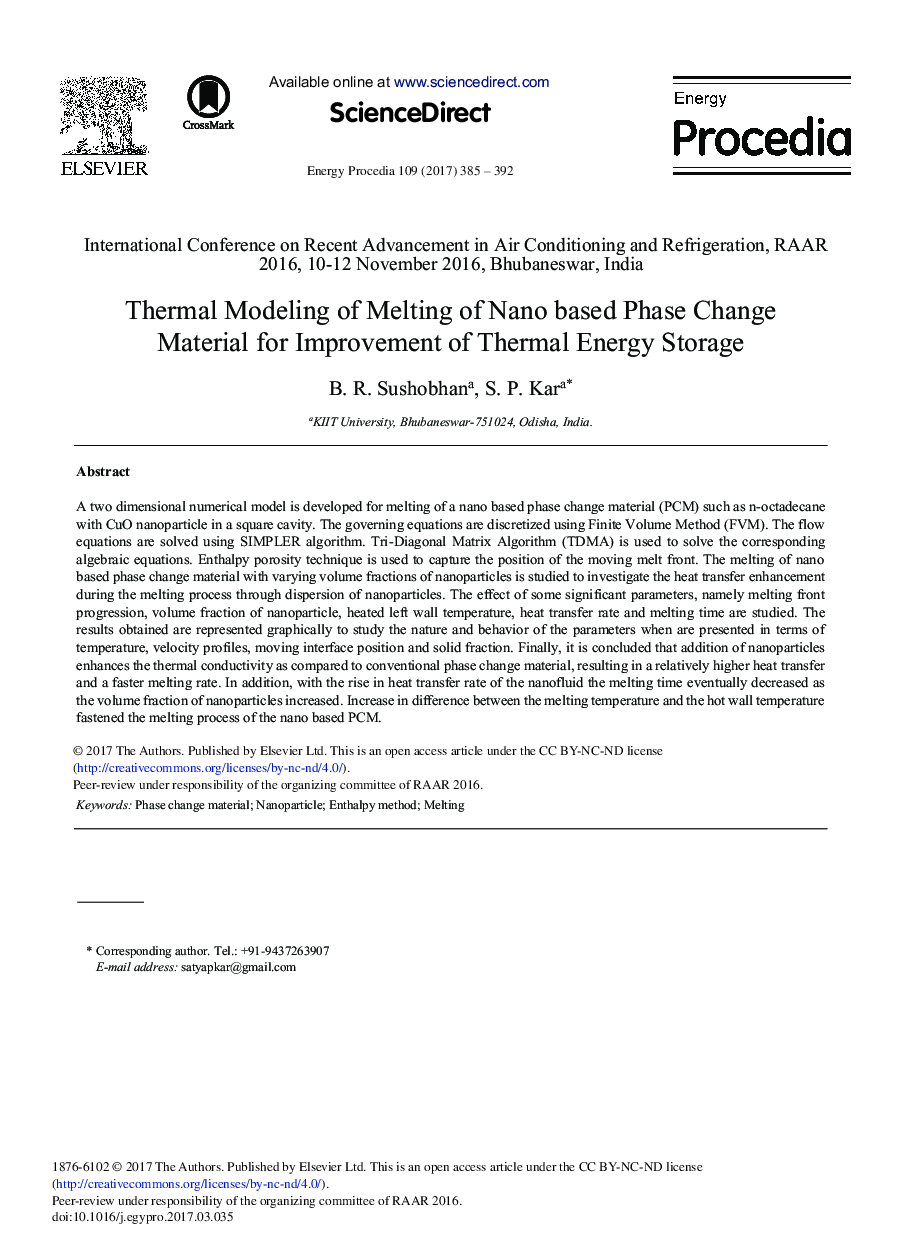| Article ID | Journal | Published Year | Pages | File Type |
|---|---|---|---|---|
| 5446030 | Energy Procedia | 2017 | 8 Pages |
Abstract
A two dimensional numerical model is developed for melting of a nano based phase change material (PCM) such as n-octadecane with CuO nanoparticle in a square cavity. The governing equations are discretized using Finite Volume Method (FVM). The flow equations are solved using SIMPLER algorithm. Tri-Diagonal Matrix Algorithm (TDMA) is used to solve the corresponding algebraic equations. Enthalpy porosity technique is used to capture the position of the moving melt front. The melting of nano based phase change material with varying volume fractions of nanoparticles is studied to investigate the heat transfer enhancement during the melting process through dispersion of nanoparticles. The effect of some significant parameters, namely melting front progression, volume fraction of nanoparticle, heated left wall temperature, heat transfer rate and melting time are studied. The results obtained are represented graphically to study the nature and behavior of the parameters when are presented in terms of temperature, velocity profiles, moving interface position and solid fraction. Finally, it is concluded that addition of nanoparticles enhances the thermal conductivity as compared to conventional phase change material, resulting in a relatively higher heat transfer and a faster melting rate. In addition, with the rise in heat transfer rate of the nanofluid the melting time eventually decreased as the volume fraction of nanoparticles increased. Increase in difference between the melting temperature and the hot wall temperature fastened the melting process of the nano based PCM.
Related Topics
Physical Sciences and Engineering
Energy
Energy (General)
Authors
B.R. Sushobhan, S.P. Kar,
